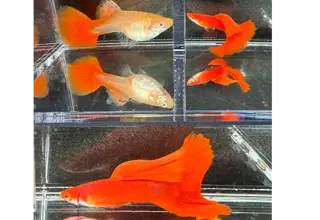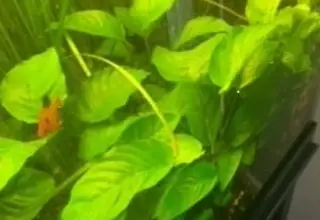10 Small Algae Eaters for Freshwater Aquariums
Posted by on 08/16/2023
If your freshwater aquarium has been taken over by algae, you can enlist the help of other aquatic life forms to assist in algae removal. However, not all hobbyists have a large enough tank to introduce new species on a whim.
In this post, we'll recommend 10 of the smallest algae eaters that you can introduce into your nano aquarium.
Our Top 10 Smallest Algae Eaters
When selecting a small-sized algae eater, you'll want to make sure it doesn't grow to an unanticipated size. Luckily, these 10 options will stay small, so that you can focus on other areas of your tank.
Amano Shrimp
Arguably the best algae eater in the hobby, this shrimp will only grow to be about an inch in length.
Named after famous aquarist Takashi Amano , these shrimp will consume every type of algae in your tank, including the infamous black beard algae.

Blue Dream Shrimp
While any color morph of Neocaridina Davidi will consume certain types of algae, our favorite are the blue dreams. These shrimp sport a dark-blue coloration, making them easy to spot in a crowded aquarium.
Hobbyists should have no problem spotting these shrimp munching on available algae in their tanks.

Assassin Snails
Assassin snails are technically carnivores, frequently cruising around the tank to feed on pest snails.
However, once these mollusks have run out of meaty options, they'll turn to diatoms and other algae films present in your tank.

Mystery Snails
Also known as the Spike-topped Apple Snail, Mystery Snails grow to about 2 inches in length, and will feed on algae, leftover fish food, and dead plants. They've even been known to eat duckweed but, fortunately for hobbyists, will ignore other types of aquatic plants.

Pygmy Cory
While these fish require protein-rich fish food, their diets can also be supplemented with algae. Hobbyists that have diatoms or green dust algae growing along the substrate will benefit from the addition of a few pygmy corydoras.

Siamese Algae Eater (requires 20-gallon tank)
The largest algae eater on our list is the Siamese Algae Eater, and hobbyists looking to acquire this species will need at least a 20-gallon aquarium.
Similar to dwarf corys, these fish prefer to lounge along the substrate, where they'll pick at algae wafers, leftover fish food, and naturally occurring algae, such as diatoms.

Otocinclus vestitus
Hobbyists that are fending off dust algae growing along their aquarium glass should strongly consider adding a few Otocinclus fish. These fish, often abbreviated as "Otos", love to munch on any dust-like algae that are available.
If enough dust algae is present, you can easily see the result of their algae-eating abilities.

Nerite Snails
Next on our list is the Nerite snail, and while the species may be best known for the intricate design patterns on their shells, these mollusks will also consume algae as part of their diet. While these snails may not be as fast at eating algae as shrimp and fish, what they lack in speed they make up for with their unique appearance.

Ramshorn Snail
If you've ever seen a bright red or deep blue aquatic snail, you've likely seen a ramshorn. These snails feed primarily off of green and brown algae growing along the substrate, and will also clean off driftwood and aquatic stones, such as seiryu stones.
Some hobbyists may consider Ramshorns to be pest snails, as the species is hermaphroditic, meaning two organisms of any sex are capable of producing offspring.
👉 Shop Pretty Pink Ramshorn Snails ($45) from PKEndlers

Malaysian Trumpet Snail
While Nerites and Ramshorns are probably the fastest algae-eating snails on our list, one cannot discount the Malaysian Trumpet.
Growing to be about an inch, these snails are slow movers, but will occasionally munch on algae growing along the aquarium glass.
👉 Shop Malaysian Trumpet Snails ($14) from Auddities

Conclusion
That wraps up our list of 10 small algae eaters for freshwater aquariums. Now that we've provided you with a few options, which small algae eater do you think you'll choose? Let us know in the comments, and be sure to visit our inverts category, where you can find many of the species we've mentioned for sale by other hobbyists.
December's Giveaways on Light Fish









